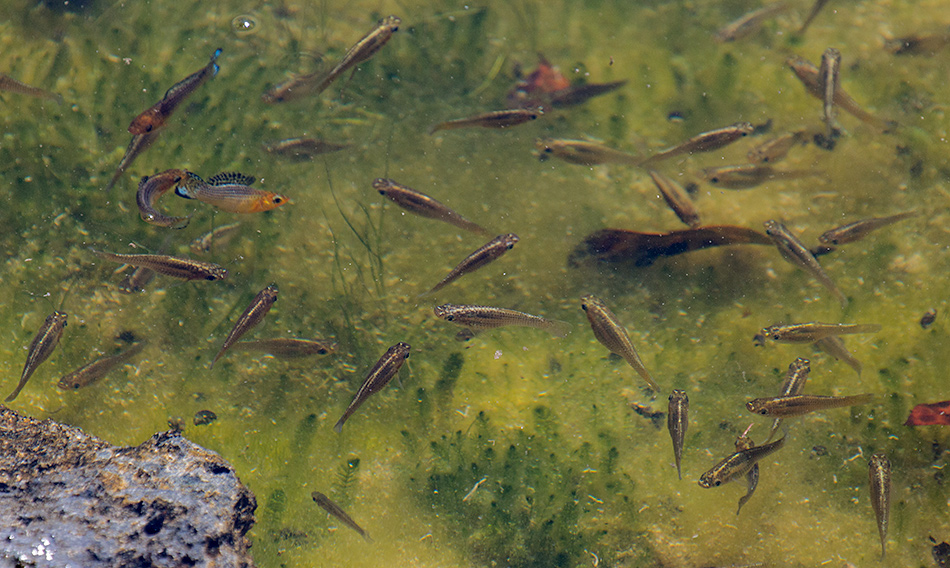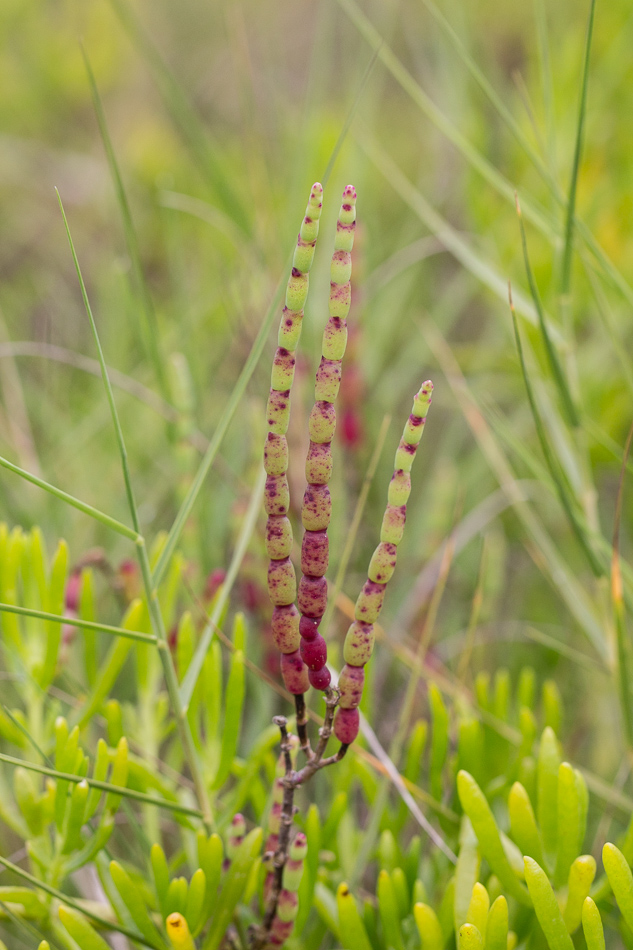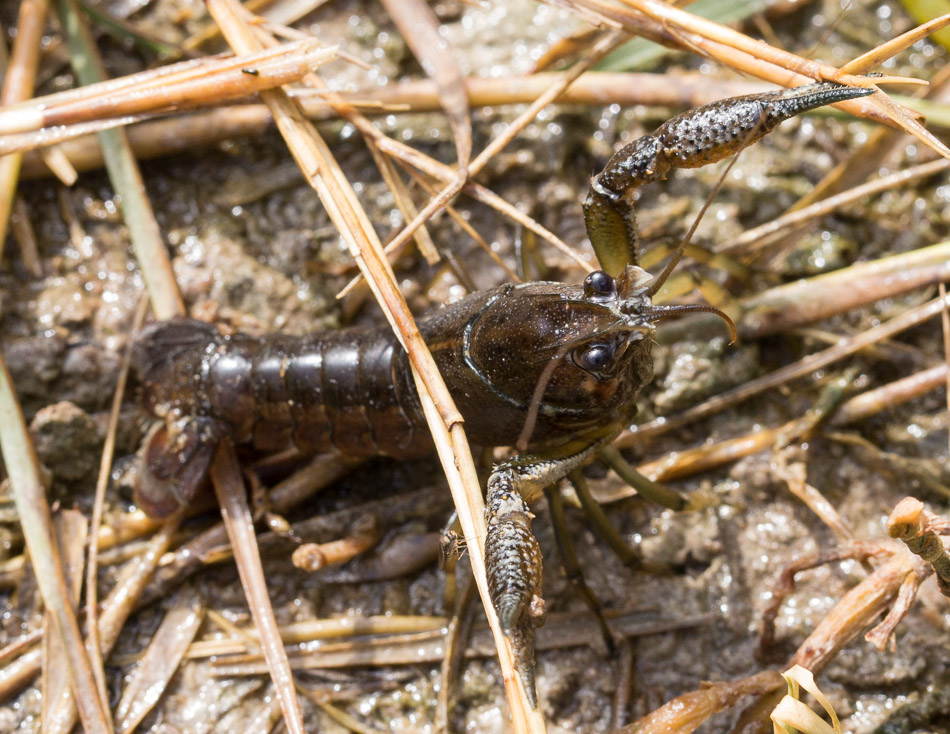Dagny Johnson Key Largo Hammock Botanical State Park could use better signage; we missed it on the first drive by, thanks also to an unhelpful location from Google Maps. It resides “on land bought up in 1982 after the financial demise of Port Bougainville, a project which would have included 15 hotels and over 2000 condos.” (wiki) Its entrance has a large archway fitting for a housing development, and visitors walk on pavement that is beginning to crumble and other bits of construction from that earlier intended use. Some interesting history of Key Largo, including the changing of hands and various land use, is recounted here.
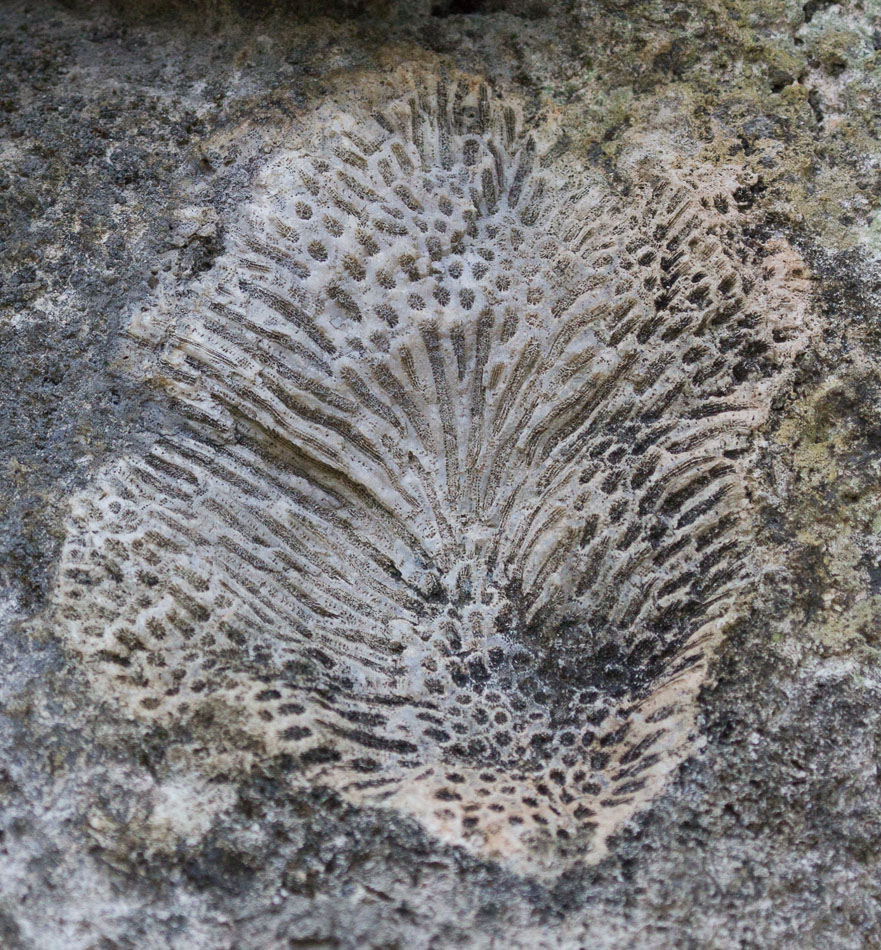
The stones used here are made from keystone, a limestone thick with fossilized corals. (photo by quoderat)
Several signs, and more importantly tags on the actual trees, identify notable species along the trail. The tropical hammock here is very dense, with the trees often arching over even the two car-widths paths.
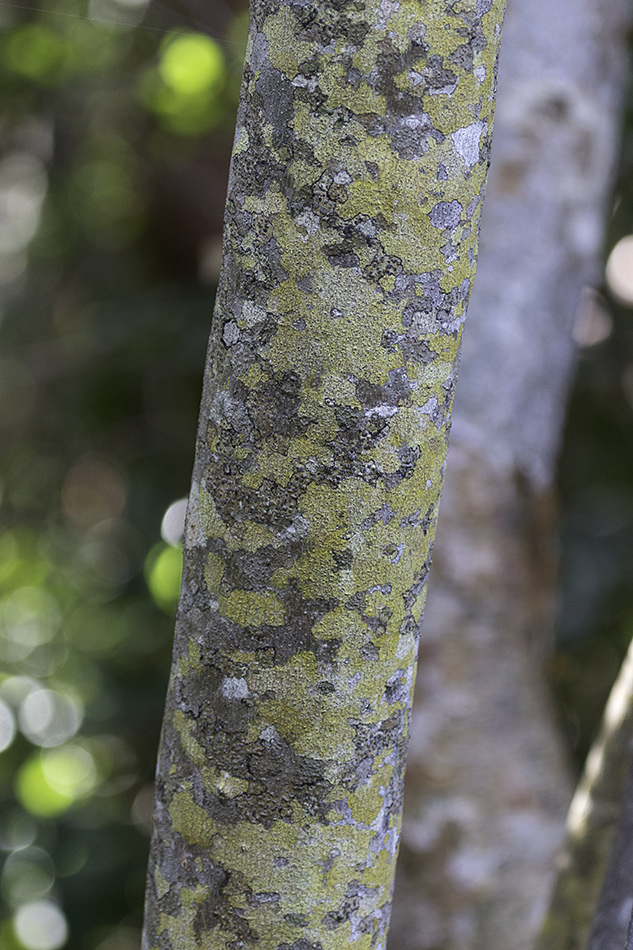
Trunk of a blolly tree (by quoderat)
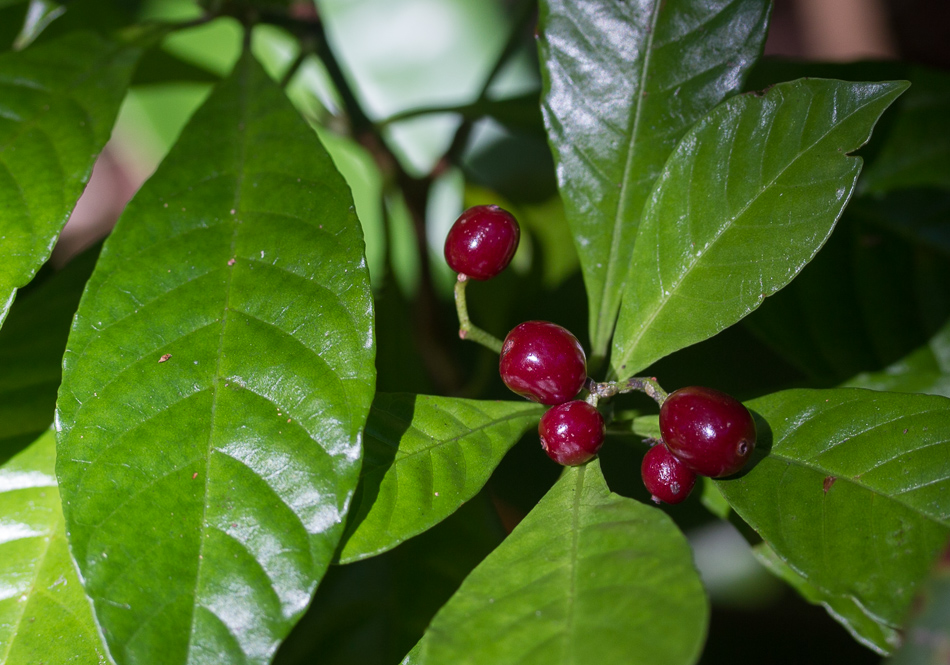
Wild coffee (by zanna)
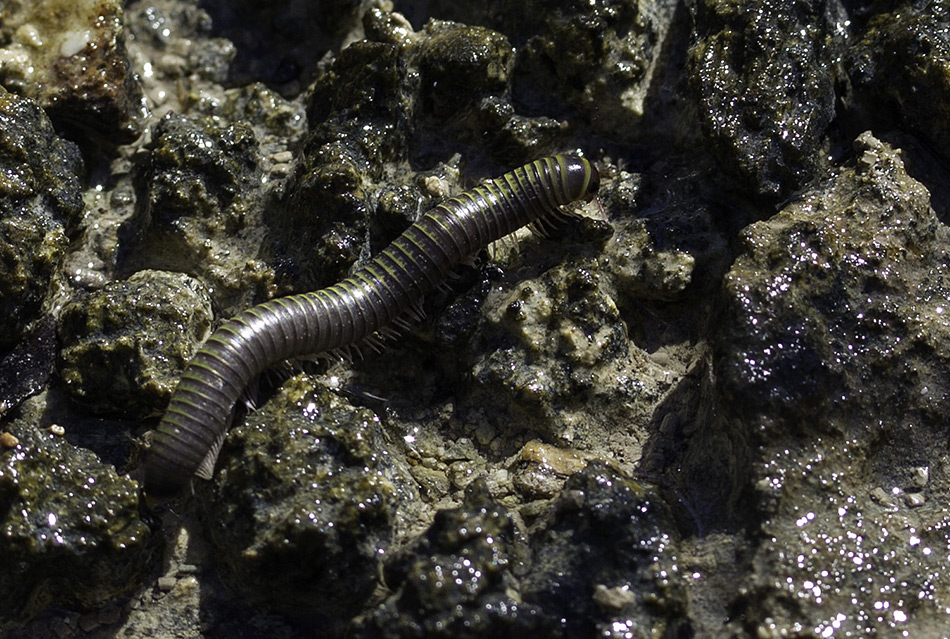
Where the tidal waters reach, the hammock turns to mangroves. We were there during high tide, and the outer loop of the trail was submerged. Quoderat found a millipede near here. (photo by zanna)
We saw a couple of grebes and many fish in an excavated channel in the middle of the loop trail. (by quoderat)
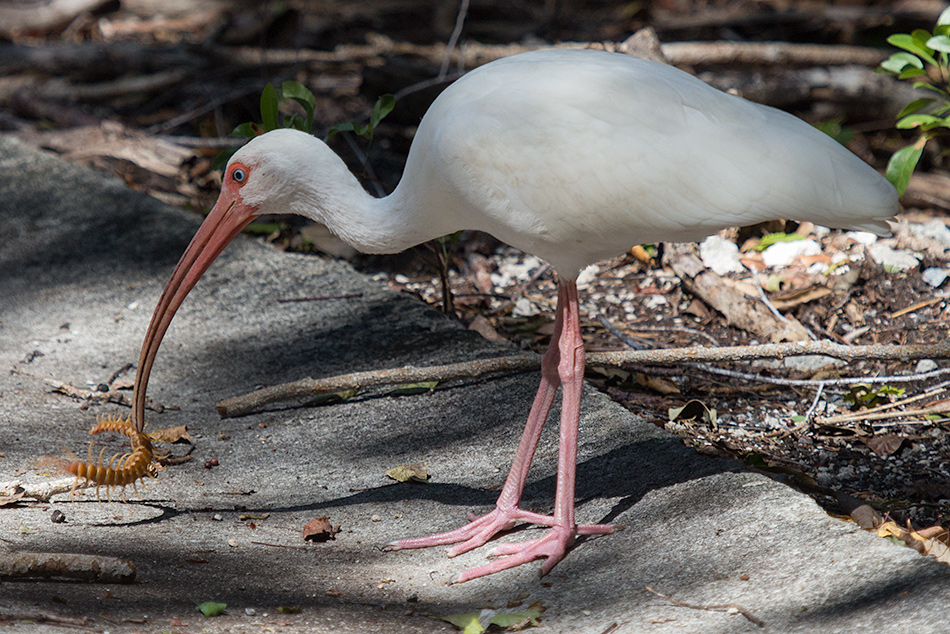
On our way back, we watched while a white ibis wrangled and snapped at and eventually ate a huge, wriggling and very unappetizing looking (to us) centipede. (by quoderat)
Last night the sky opened up and dumped at least an inch a rain, and this morning the clouds were foreboding and tempestuous as we drove back into Everglades National Park. The sky remained threatening and the wind was a gale off Florida Bay at Flamingo Visitor Center — over 30 miles from the park entrance — so we waited in the car for either the weather or our patience to subside.
Eventually it began to clear and we headed to Christian Point Trail. We didn’t manage to get more than halfway down this one as it was wade-only after a bit.
The trail began through mangroves and through muck which a short boardwalk bridged. (Photo by zanna.)

The water at the start of the trail was this odd umber color. (Photo by quoderat.)
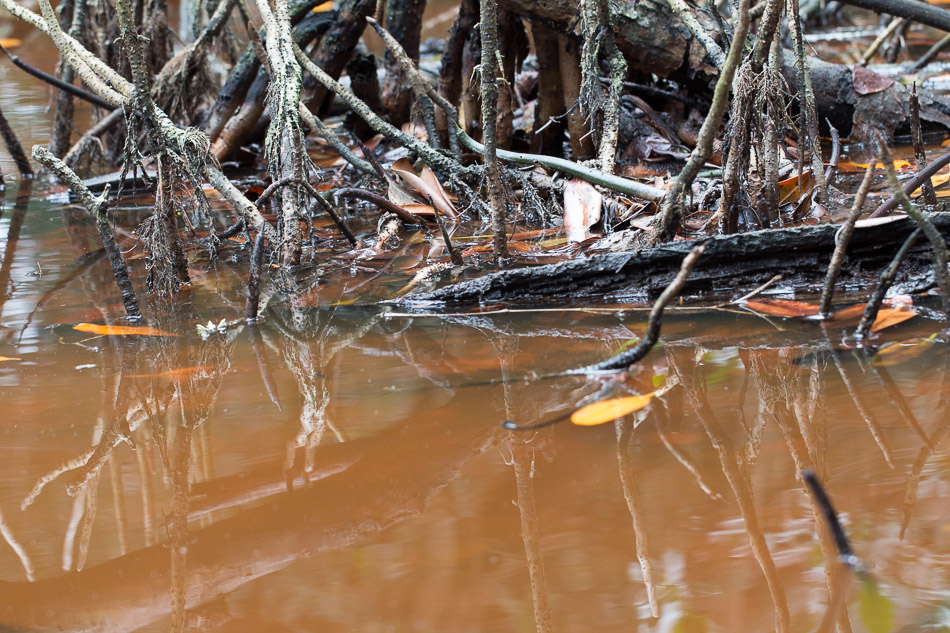
We found this orchid growing on one of the trees. (Photo by quoderat.)

Glasswort was one of the most common plants as the trail passed into wet prairie. (Photo by quoderat.)
This crayfish was crossing the trail ahead of us and raised its claws defensively as we passed. Or perhaps it was just applauding our footwear. (Photo by quoderat.)
We also visited Pahayokee Overlook and its short boardwalk. This really allowed one to see why the Everglades is sometimes called the “Sea of Grass.” (Photo by zanna.)
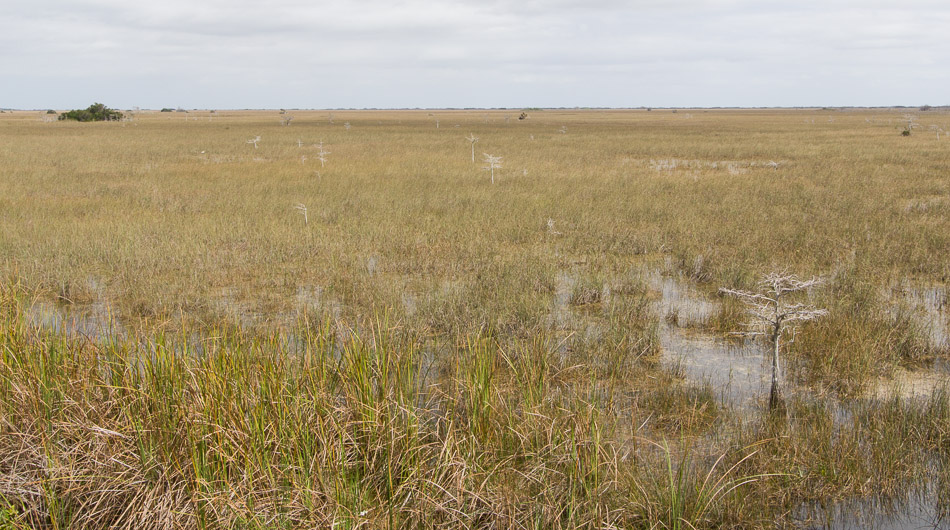
In the Everglades, elevation changes everything. Only a few inches of difference can create a completely altered ecosystem. The dwarf cypress trees in the photo above are almost certainly the same species as in the photo below, and the much smaller ones are likely to be older than their consanguine counterparts that grow taller and much faster in better conditions. (Photo by zanna.)
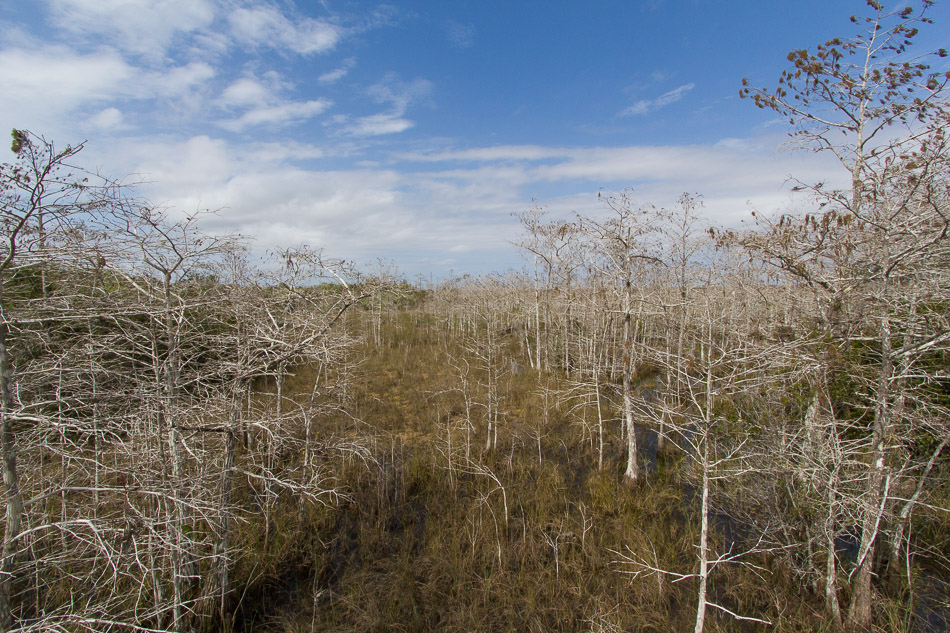
Immediately outside the city areas of greater Miami, the agriculture starts. Lots of squash and tomatoes — the fresh produce that stocks grocery stores in the winter months. A few minutes beyond and you reach Everglades National Park.
As with all of Florida, a few inches difference in elevation completely changes the ecosystem. From the Long Pine Key day use area, the short Three-in-One Trail covers pine rockland, tropical hardwood hammock, and freshwater marsh. As we are here in the dry season, the marsh had no standing water, allowing us to cross the grasses dry-footed to the Long Pine Key Trail.
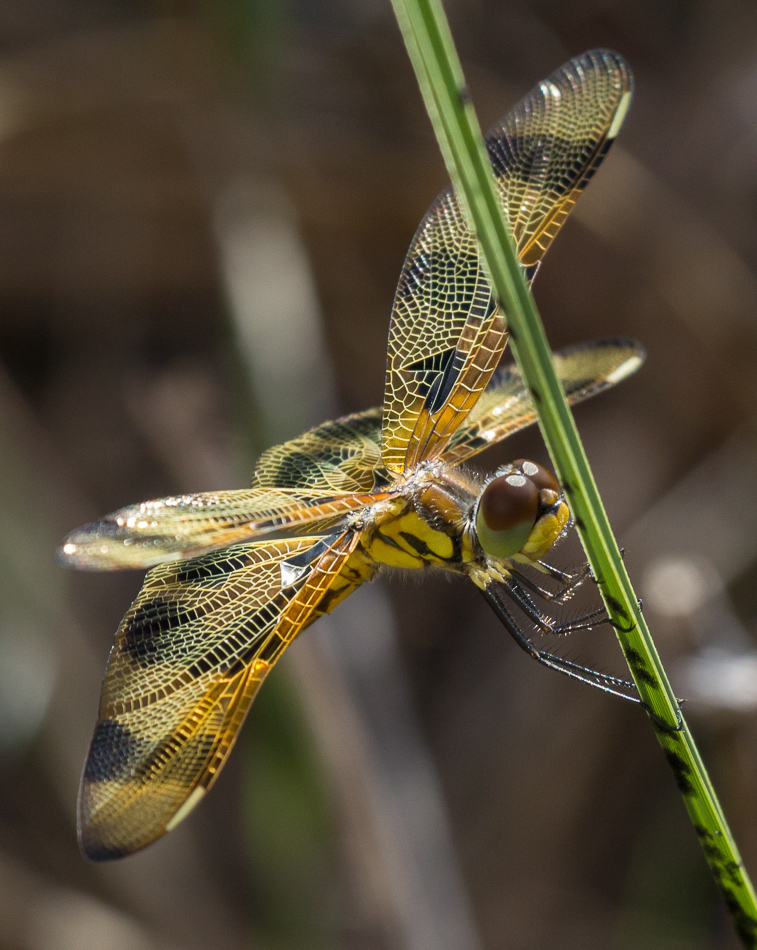
We saw several halloween pennant dragonflies patrolling the marsh grasses and pinelands. (by zanna)
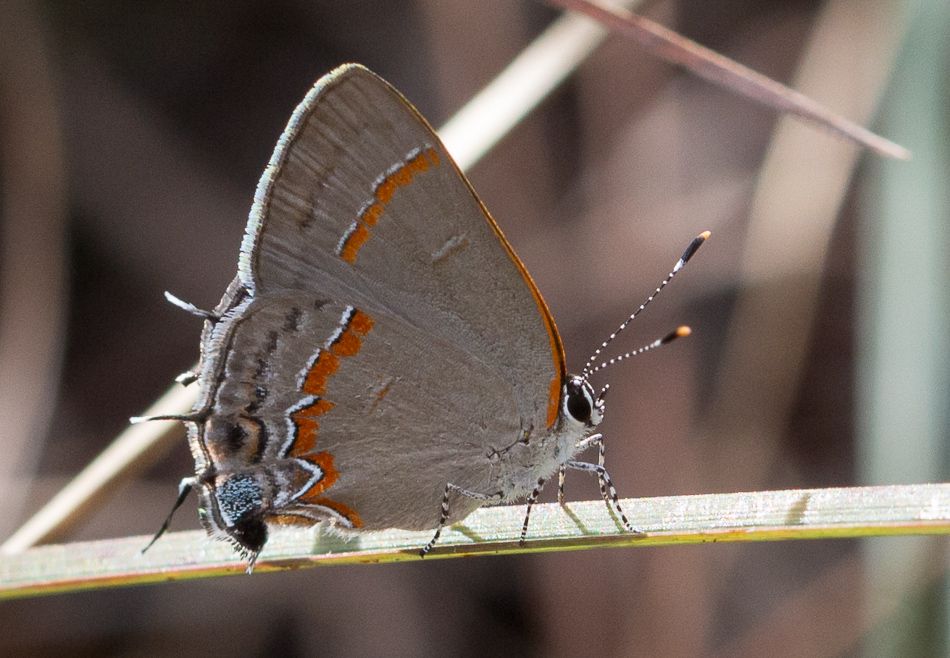
Quoderat spotted and photographed this red-banded hairstreak while I was trying to get more red-breasted woodpecker shots.
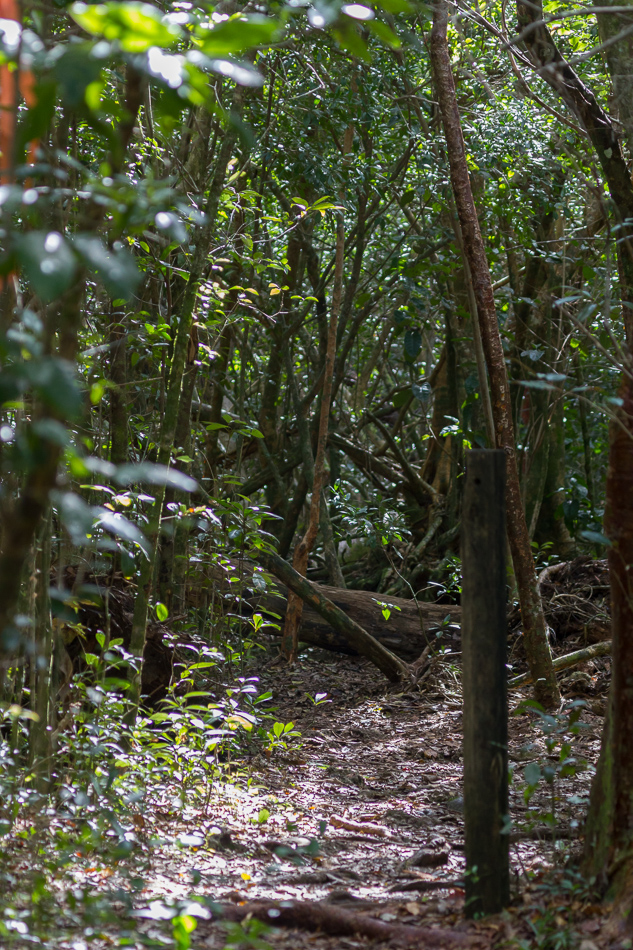
In the dense tropical hardwood hammock, we entered deep shade accompanied by a several degree drop in temperature. (by zanna)
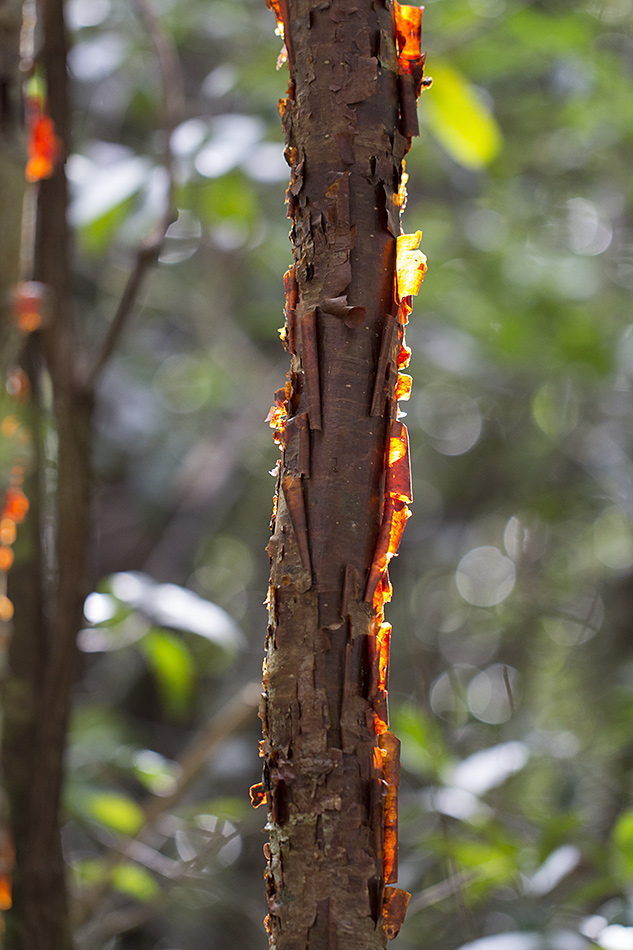
Backlit gumbo-limbo bark. (by quoderat)
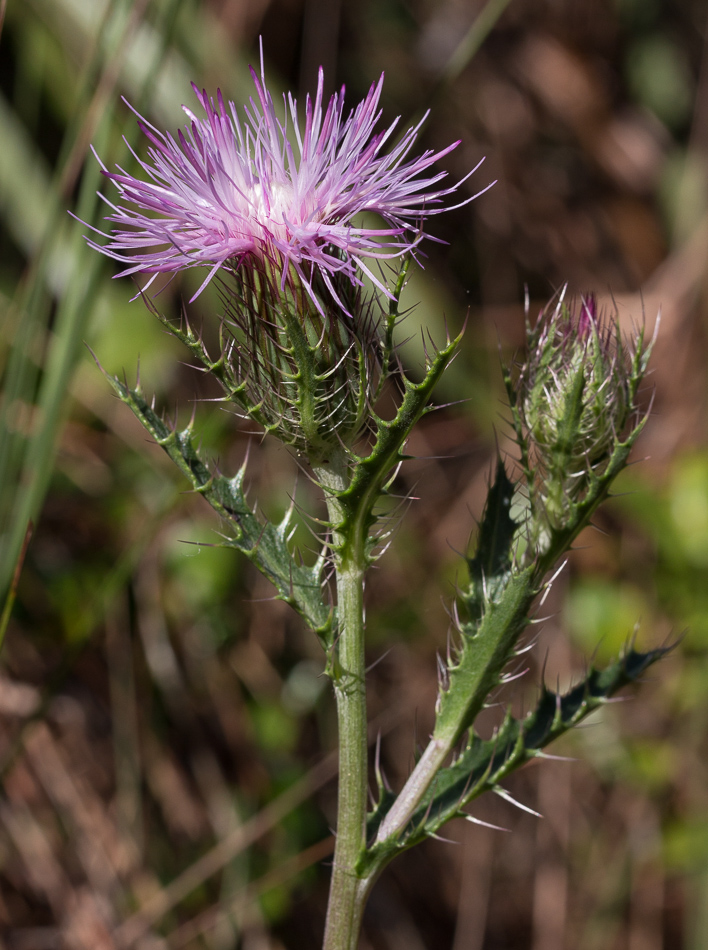
Though thistles are everywhere, we aren’t familiar with this particular kind. (by quoderat)
Ours was the only vehicle when we first pulled into the easy Pinelands trail. Signs explained that the tree snails in the Everglades developed distinct color patterns in isolated hardwood hammocks where they eat lichen in the (even more) humid summer months and estivate (hibernate) through the dry months. In the past, collectors had sometimes burned down hammocks after harvesting the snail shells in order to make their collection more valuable. (by quoderat)
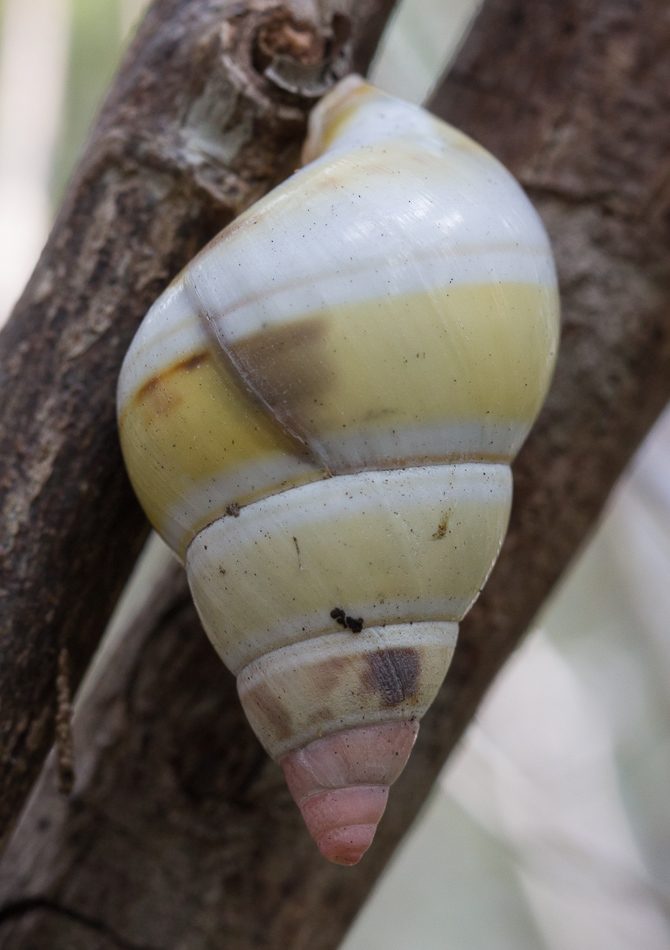
Today was the day of boardwalks. As we drove through the Everglades, we decided to stop at the Kirby Storter boardwalk in the Big Cypress National Preserve to have a look around. Though relatively short, it had a wealth of wildlife.
There isn’t terrain quite like this anywhere else in the US. (Photo by zanna.)

Another interesting swampy area, only a few dozen meters from the wet grassland in the previous image. (Photo by quoderat.)
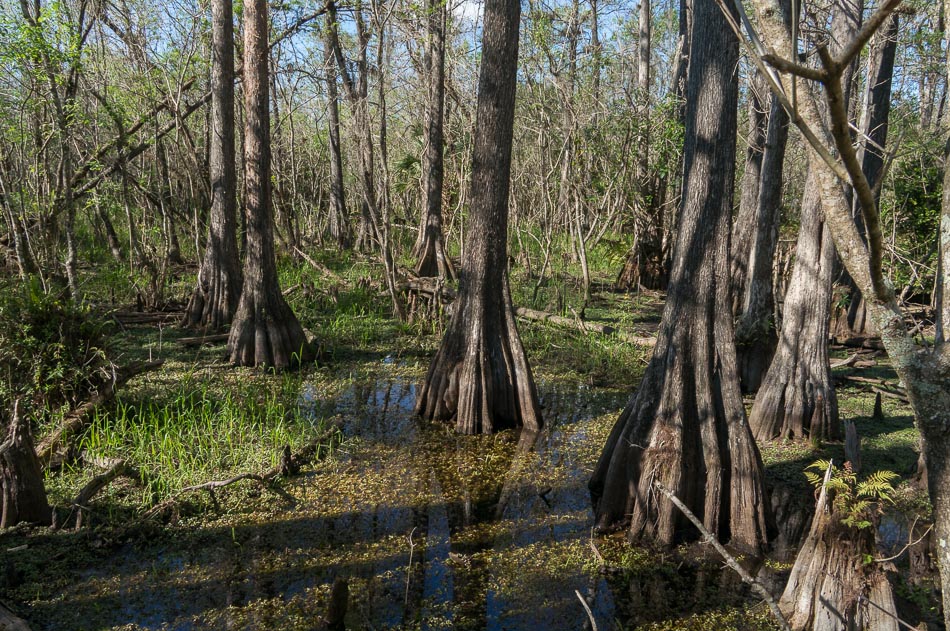
As it is the dry season here, these fish have congregated in one the remaining deeper pools at the end of the boardwalk, waiting for the summer rains to return. There were probably hundreds of fish in a very small area. (Photo by quoderat.)
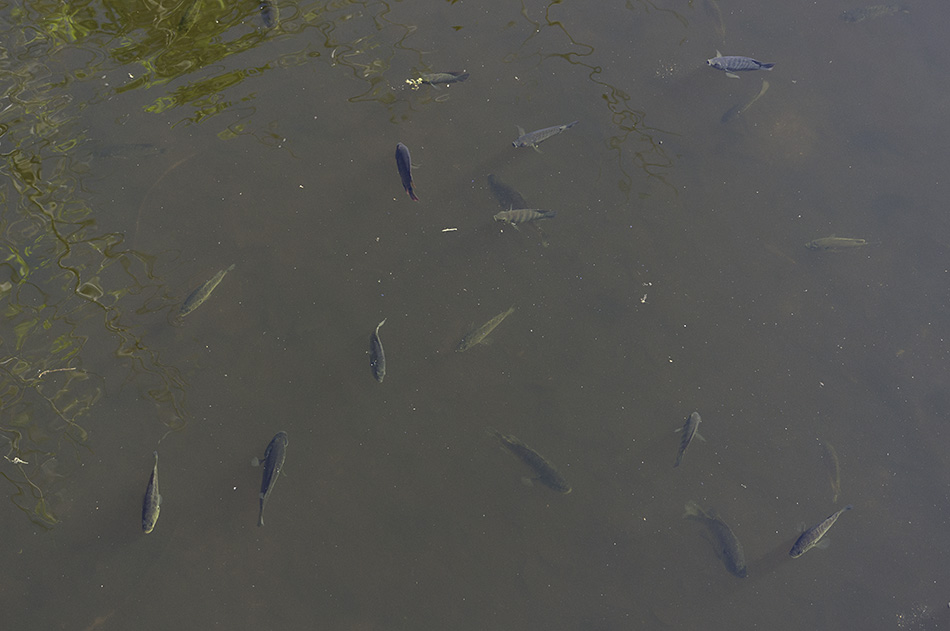
A wood stork was perched over the small pond with all the fish, watching and cleaning its feathers. (Photo by zanna.)
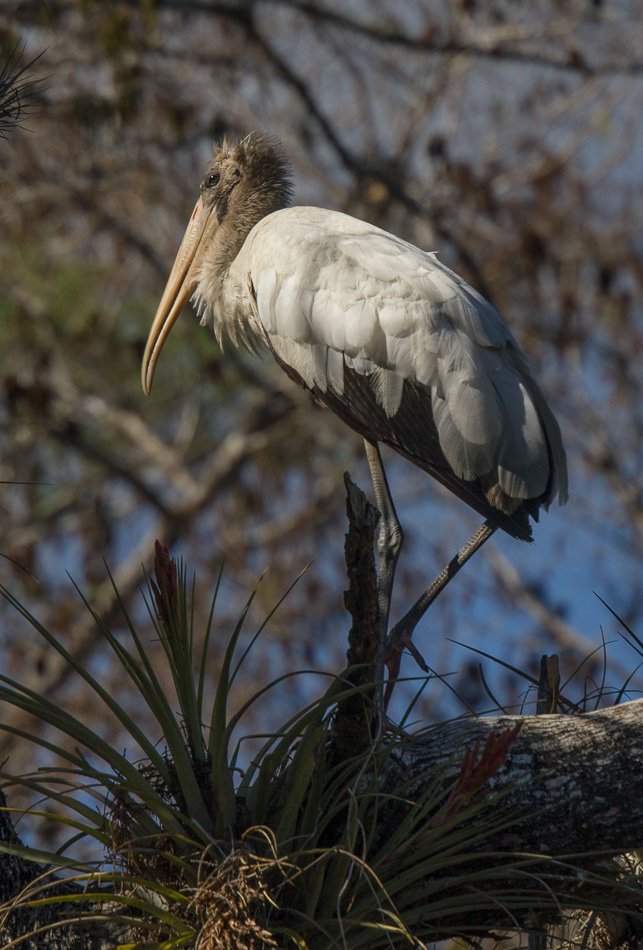
The admission fee was a bit high ($12 per person), but Audubon’s Corkscrew Swamp Sanctuary south of Fort Myers really paid off in the number and variety of birds we spotted.
We saw probably more than a dozen species of birds, some of which we’ve never seen before. We’ve spotted a red-shouldered hawk quite a few times before, but thought this was a pretty good photo (by quoderat).
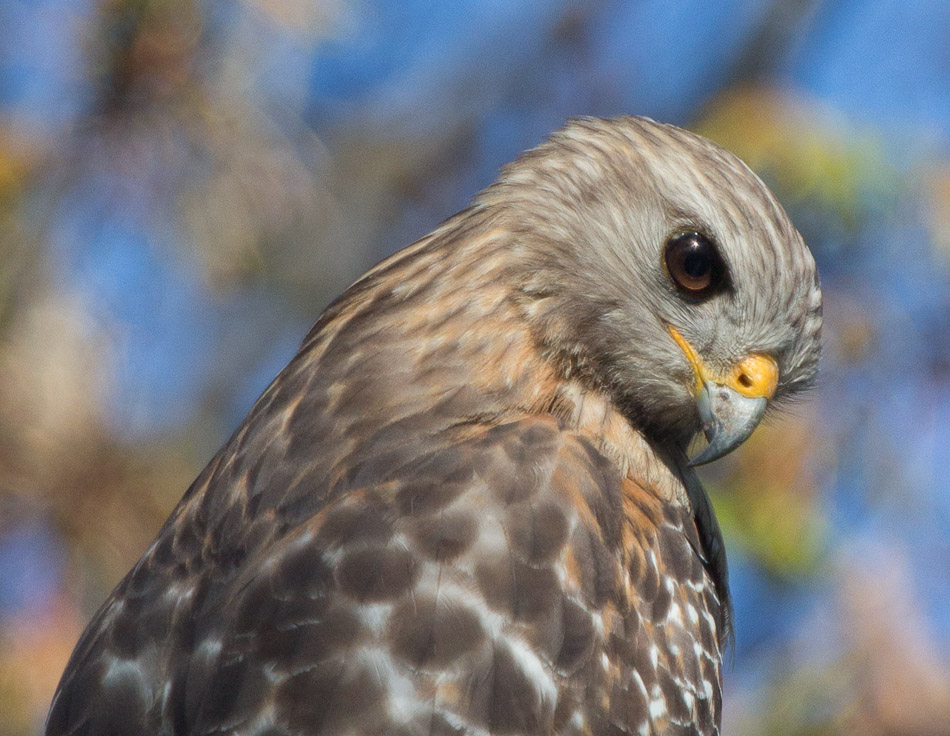
We also saw this small black and white warbler flitting and hopping around like mad, though zanna managed to capture this photo of it eating some bug.
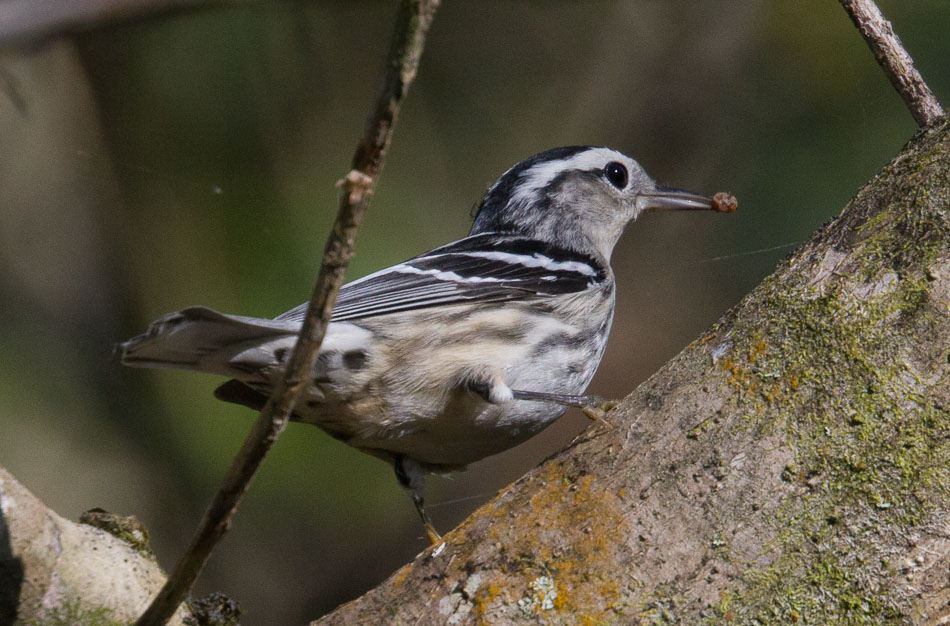
And this little blue heron was also hunting for its meal. (Photo by quoderat).

And this grebe was showing a little excitement. (Photo by zanna.)
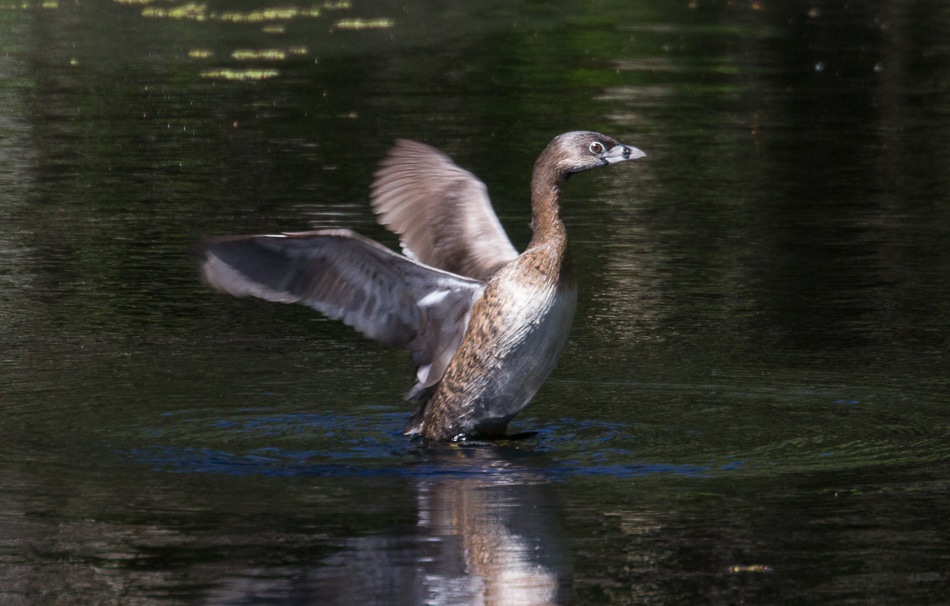
The entire boardwalk itself was around 2.25 miles and passed through a variety of biomes. We thought this was the most interesting. (Photo by zanna.)

As in all of Florida, anywhere there is a few inches of water there are fish. We’re not sure what species these are. (Photo by quoderat.)
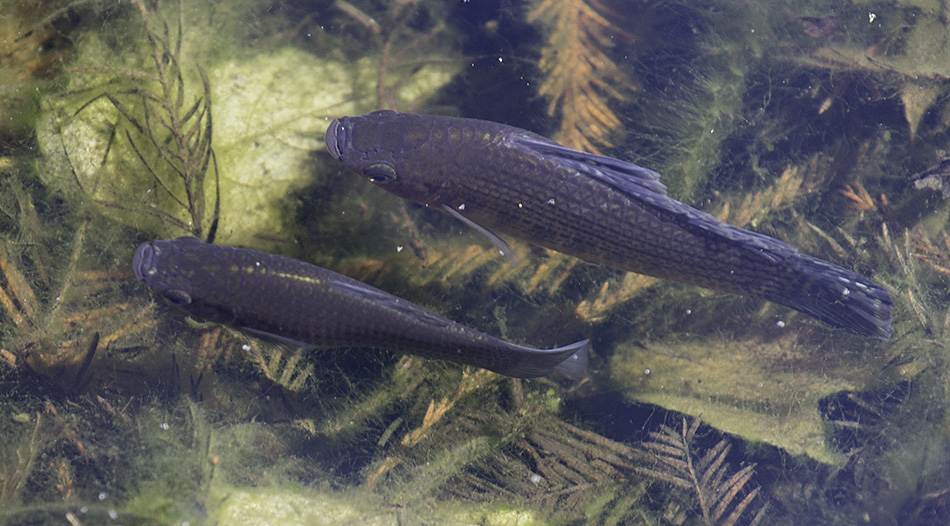
This Dolomedes fishing spider was waiting for some unlucky insect or ichthyoid to pass by. (Photo by quoderat.)

